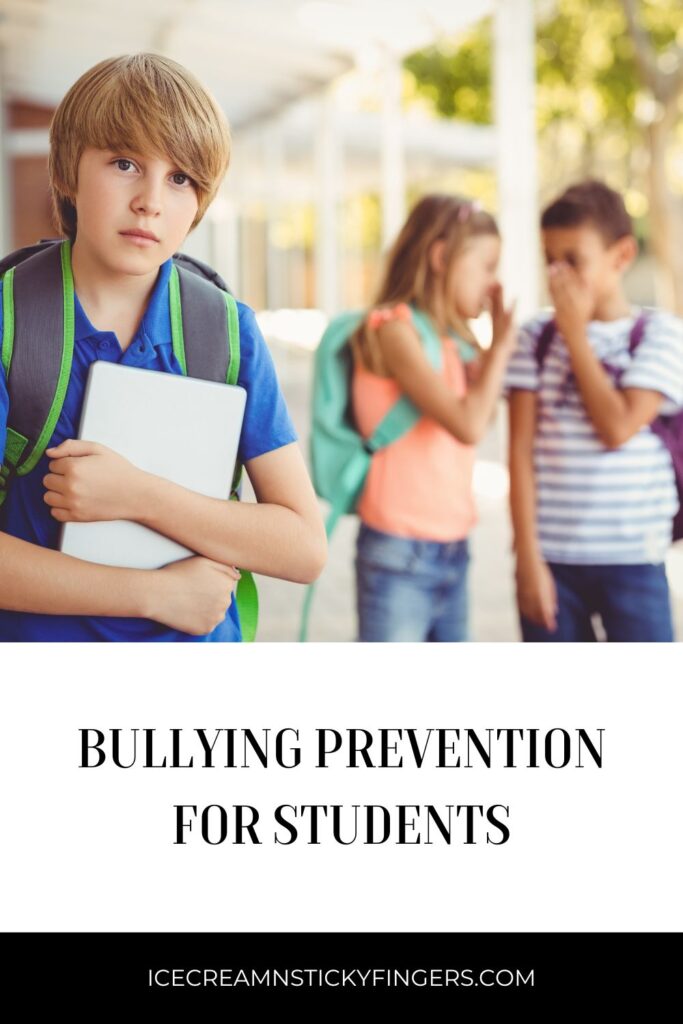Bullying is the repetitive, intentional act of causing harm, discomfort, or distress to another person, typically someone who is perceived as weaker or vulnerable. Bullying prevention for students is crucial for creating a safe and supportive environment for all students. Here are some effective bullying prevention for students:

Education and Awareness
Bullying education and awareness are crucial for creating a safe and supportive environment in schools, workplaces, and communities. It involves teaching individuals about the harmful effects of bullying, how to recognize it, and strategies for prevention and intervention.
- Teach Empathy and Respect: Incorporate lessons that focus on empathy, respect, and understanding diversity. Programs like SEL (Social Emotional Learning) can help students understand the impact of their actions on others.
- Anti-Bullying Programs: Implement comprehensive anti-bullying programs that educate students, teachers, and parents about what bullying is, its effects, and how to prevent it.
- Workshops and Assemblies: Regular workshops or assemblies can be held to discuss bullying, its impact, and the importance of standing up against it.
Create a Safe Environment
Creating a safe environment against bullying requires a multi-faceted approach that involves everyone in the community—students, teachers, parents, and administrators.
- Clear Policies: Schools should have clear anti-bullying policies in place that are well-communicated to students, staff, and parents. These policies should outline what constitutes bullying and the consequences for such behavior.
- Supervision: Ensure that students are adequately supervised, especially in areas where bullying is more likely to occur, such as playgrounds, hallways, and cafeterias.
- Safe Spaces: Create safe spaces within the school where students can go if they feel threatened or need to talk about bullying.
Empower Bystanders
Empowering bystanders to speak up about bullying is crucial in creating a safer and more supportive environment.
- Encourage Reporting: Make it easy and safe for students to report bullying, whether they are victims or witnesses. Anonymous reporting options can also be beneficial.
- Bystander Intervention: Teach students how to intervene safely and effectively if they witness bullying. This can include speaking up, offering support to the victim, or seeking help from an adult.
Support for Victims
Supporting bullying victims involves offering emotional support, practical help, and advocating for their well-being.
- Counseling Services: Provide access to counseling services for students who have been bullied. This can help them cope with the emotional impact and rebuild their confidence.
- Peer Support Groups: Establish peer support groups where students who have experienced bullying can share their experiences and support each other.
Involve Parents and the Community
Involving parents and the community in anti-bullying efforts can lead to long-term cultural change, as children who grow up in environments that reject bullying are more likely to carry those values into adulthood, contributing to a more respectful and empathetic society.
- Parent Education: Hold workshops for parents to help them understand the signs of bullying and how to support their children if they are involved in bullying, either as victims or perpetrators.
- Community Engagement: Work with community organizations to create a broader culture of respect and kindness outside of the school.
Positive School Climate
A positive school climate offers numerous benefits for students, teachers, and the broader school community.
- Promote Inclusivity: Encourage inclusivity through school activities, clubs, and events that celebrate diversity and promote positive interactions among students.
- Recognition Programs: Implement programs that recognize and reward positive behavior, kindness, and efforts to prevent bullying.
Intervene Early
Early intervention can stop bullying from escalating into more severe forms of abuse or long-term psychological damage. Prompt action helps protect individuals’ well-being and fosters a culture of respect and empathy.
- Identify Early Signs: Train teachers and staff to recognize early signs of bullying and intervene before it escalates.
- Restorative Practices: Use restorative practices to address bullying incidents, focusing on repairing harm and rebuilding relationships rather than just punishing the bully.

Training for Staff
Bullying can be subtle and might not always be obvious. Training helps staff recognize signs and behaviors that might indicate bullying, even if it’s not immediately apparent.
- Professional Development: Provide ongoing training for teachers and staff on recognizing, addressing, and preventing bullying. This training should include how to handle reports of bullying and how to support both the victim and the perpetrator.
- Crisis Intervention: Equip staff with skills to handle crisis situations related to bullying and provide them with resources for further support.
Leverage Technology
Technology can play a significant role in preventing and addressing bullying.
- Digital Citizenship: Incorporate lessons on digital citizenship, teaching students about appropriate online behavior, the impact of cyberbullying, and how to protect themselves online.
- Online Reporting Tools: Provide online platforms or apps where students can report bullying incidents anonymously, making it easier for them to come forward.
Continuous Monitoring and Evaluation
Regular evaluation helps determine if current anti-bullying strategies are working. If not, adjustments can be made to improve outcomes.
- Regular Surveys: Conduct regular surveys to assess the prevalence of bullying and the effectiveness of prevention strategies.
- Adjust Strategies: Be prepared to adjust prevention strategies based on feedback from students, staff, and parents.
Promote Healthy Relationships
Healthy relationships teach individuals to empathize with others, understand different perspectives, and appreciate diversity. This understanding reduces the likelihood of bullying, which often stems from a lack of empathy or misunderstanding.
- Conflict Resolution Skills: Teach students conflict resolution skills and how to handle disagreements in a constructive manner.
- Healthy Relationships Education: Incorporate lessons on building healthy relationships and effective communication, both in personal interactions and online.
By adopting a multifaceted approach and engaging all members of the school community, bullying prevention for students can be more effective in fostering a safe, respectful, and inclusive environment for all students.


I so hate when kids are bullied 🙁 It’s a shame some kids are cruel towards others. You have good advice here. I always told my kids to let an adult know if someone is being an asshole. Or if they don’t want to, let ME know and I’ll deal with it.
I think it’s important for parents to teach their child how to be kind from an early age and we may have less bullying.
Parents need to teach their child to be kind to everyone. I am so sad that bullying nowadays is very evident to the kids.
I really appreciate the emphasis on creating a safe and supportive environment for all students. The tips on involving the community, empowering bystanders, and supporting victims are especially helpful.
It’s great to see practical advice on how teachers and parents can work together to empower kids and promote kindness. I was always kind to the new students, loners, & those I witnessed being bullied. I passed that on to my children as well.
bullying takes so many forms and is not always loud or physical… i always told/tell my kids to ensure they reach out to those who are sitting by themselves during lunch hours and to speak up for those who need help..
Bullying is a tough thing, since schools struggle to keep up with addressing it (in my opinion). There is also quite a bit of exclusion, which is just as bad of a form of bullying, and I see it all the time, especially in sports etc.